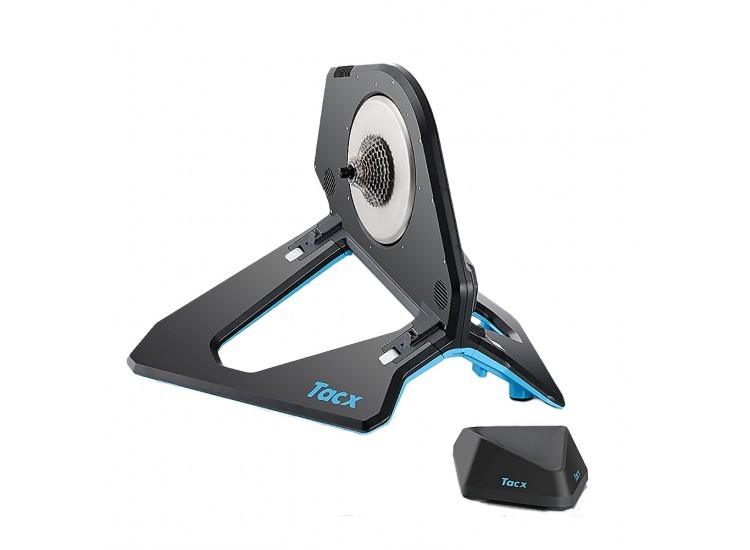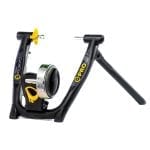Trainers can be organized into many different categories, but when it comes to Zwift, you’re either on a “smart” or a “classic” (or “dumb”) trainer.
Smart Trainers
A smart trainer’s resistance is controlled by Zwift. When the incline of the Zwift course changes, your resistance changes. You “feel” the hills. Additionally, a smart trainer will broadcast your power (and usually cadence) via ANT+ and Bluetooth. So those are the two key things smart trainers do which classic trainers do not: they detect your power (in watts), and change resistance on the hills.
(Note: there are certain smart trainers which are not controllable by Zwift. They broadcast power, but do not change resistance on hills. We call these “non interactive” trainers, but they are rare nowadays.)
Because smart trainers are complex electronic devices, they must either be plugged in or (in the case of a few trainers) powered by the watts you’re putting out.
Popular top-quality smart trainers on Zwift include the Tacx Neo 2T, Wahoo Kickr, Wahoo Kickr Core, Saris H3. and Elite Direto XR.
Check out our Smart Trainer Index for recommended trainers at different price levels.
Dumb Trainers
A dumb trainer doesn’t talk to Zwift – hence the name “dumb.” You may be riding up and down hills on the Zwift course, but you’ll feel no difference in the resistance because Zwift has no way of talking to your trainer or changing its resistance. Dumb trainers also do not detect your power or cadence. All they do is provide steady resistance on your back wheel.
Because of this lack of power detection, using a classic trainer on Zwift requires either a separate power meter (perhaps on your pedals, cranks, or wheel) or a speed sensor on your wheel and what Zwift calls “virtual power.” (Fair warning: virtual power users have a bit of a bad reputation on Zwift because their power is notoriously inaccurate, leading to “flyers” off the front in races.)
Dumb trainers are super simple devices. No power to plug in – just attach it to your bike and go.
Many serious Zwifters still ride classic trainers while using a power meter, because they already had both the trainer and the power meter before Zwift came along. This is a solid setup which produces accurate power readings. The only downsides are a lack of resistance changes on hills, and no ERG mode for workouts.
What’s Best for Me?
This is a question you have to answer yourself! If you have the money, going for a smart trainer will greatly enhance your Zwifting experience. The difference between riding Zwift on a classic trainer and riding it on a top of the line smart trainer is like night and day.
That said, you gotta do what you gotta do. If you can only afford a classic trainer, then go with that! Perhaps in the future you can upgrade to a smart trainer, but at least you’ll be able to hop on Zwift and train right now without breaking your budget.
Many Zwifters begin their indoor riding on a borrowed or used classic trainer, then take the plunge and purchase a nice smart trainer once they got hooked on Zwift.

